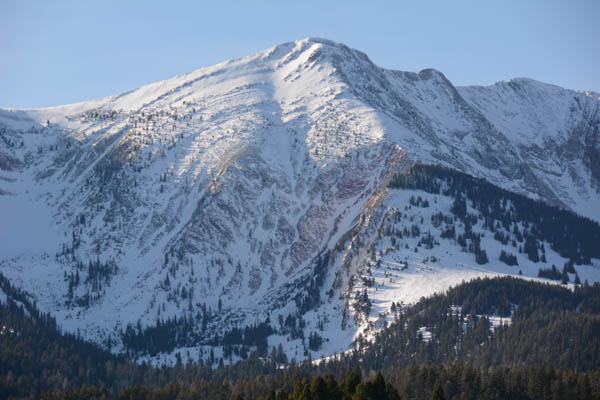
North Bridger Range. Photo: George Wuerthner.
In an article in the Bozeman Chronicle about the North Bridger Timber sale, the Forest Service justifies logging the forests based on what it calls “forest health”. The agency claims logging will “restore” resiliency. But few ask what exactly constitutes a healthy forest ecosystem?
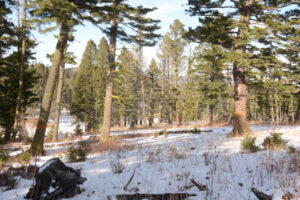
The North Bridger Timber Sale area. Photo George Wuerthner.
The agency defines forest health as a lack of tree mortality, mainly from wildfire, bark beetles, root rot, mistletoe, drought, and a host of other natural agents. To the Forest Service, such biological agents are “destructive,” but this demonstrates a complete failure to understand how forest ecosystems work.
This Industrial Forestry Paradigm espoused by the Forest Service views any mortality other than that resulting from a chainsaw as unacceptable.
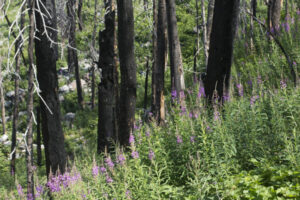
The snag forest resulting from wildfire supports some of the highest biodiversity of all forest ecosystem types. Photo George Wuerthner.
This perspective is analogous to how Fish and Game agencies used to view the influence of natural predators like wolves and cougars on elk and deer. Over time biologists learned that culling of the less fit animals by predators enhanced the survival of the prey species.
Similarly, wildfire, bark beetles, and other natural sources of mortality enhance the long-term resilience of the forest ecosystem.
For example, the snag forests resulting from a high severity fire have the second-highest biodiversity found in forested landscapes. Large, high severity fires promote more birds, bees, butterflies, wildflowers, bats, fungi, small rodents, trout, grizzly bears, deer, elk, and moose.
Many species of wildlife and plants are so dependent on snags and down wood that they live in mortal “fear” of green forests. Some estimates suggest that as much as 2/3 of all wildlife species utilize dead trees at some point in their lifecycle.
Even worse for forest ecosystems, the Forest Service emphasizes chainsaw medicine to “fix” what they define incorrectly as a “health” problem. Chainsaw medicine ignores the long-lasting effects of logging on forest genetics.
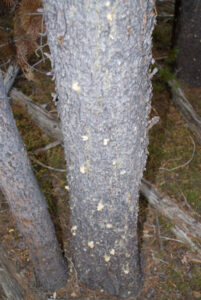
The tiny light spots on this lodgepole pine are areas where the tree used sap to shed bark beetles that were attacking the tree. Some trees are able to repel beetles due to genetic adaptations. Photo George Wuerthner.
Research has demonstrated that all trees vary in their genetic ability to adapt to various stress agents. Some lodgepole pine and ponderosa pine have a genetic resistance to bark beetles. Others are better adapted to deal with drought and so forth. Yet, a forester with a paint gun marking trees for logging has no idea which trees have such adaptive genetics.
Research has shown that thinning even 50% of a forest stand can remove half of the genetic diversity because it is the rare alleles that are important in the time of environmental stress. Perhaps one in a hundred trees may have a genetic ability to survive drought or slightly thicker bark that enables it to survive a fire.
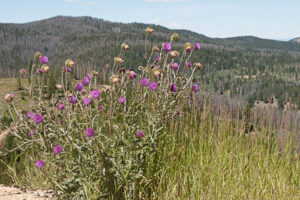
Spotted knapweed is spread widely along logging roads, and is one of the unaccounted costs of logging projects for “forest health.” Photo George Wuerthner.
There are numerous other known ecological impacts associated with logging that are minimized, overlooked, or ignored by the Forest Service. For instance, one of the primary vectors for the spread of weeds into the forest ecosystem is logging roads. Logging roads are also a primary chronic source of sedimentation that degrades aquatic ecosystems. Logging removes carbon that would otherwise be stored on the site. Even burnt forests store far more carbon than a logged/thinned forest.
So when the Forest Service asserts it is logging the forest to enhance “forest health,” one must ask whose definition of forest health are they using? The timber industry? Or an ecological perspective? So far, the agency is more a handmaiden of the industry than a custodian of the public trust.